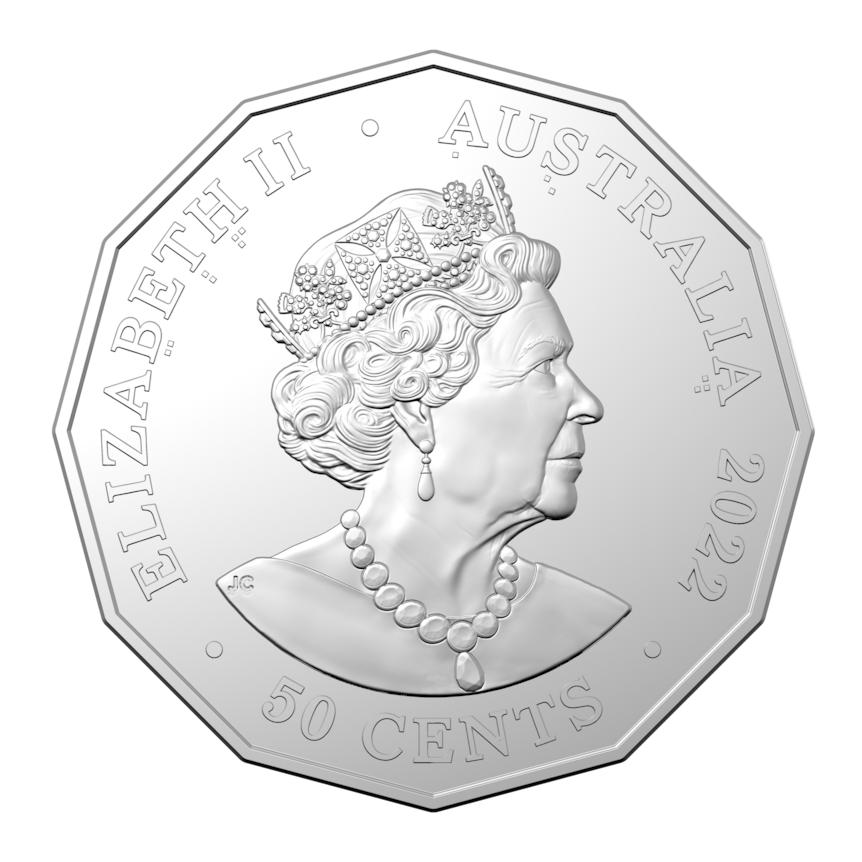Australian Signals Directorate releases coin with secret code to mark cyber spy agency’s 75th anniversary
Your spy skills could soon be put to the test by a new 50-cent coin covered in secret, coded messages.
ASD director general Rachel Noble said the coin celebrated the work of the agency’s members and the evolution of code breaking. The coin serves a larger purpose than just being a fun puzzle to solve, with Ms Noble saying those who crack the codes could be “pretty well placed” to get a job at the ASD.
“We thought this was a really fun way to engage people in code breaking with the hope that, if they make it through all four levels of coding on the coin, maybe they’ll apply for a job at the Australian Signals Directorate.”
The ASD says the coin’s four different layers of encryption are each progressively harder to solve, and clues can be found on both sides of the coin. “Ensuring people could see the code to decrypt it was one of the challenges our people were able to solve with ASD, to create a unique and special product.”
Ms Noble said that while there were no classified messages on the coin, those who crack the codes could discover “some wonderful, uplifting messages”.
“Like the early code breakers in ASD, you can get through some of the layers with but a pencil and paper but, right towards the end, you may need a computer to solve the last level,” she said.
Here are both sides of the coin to see if you can crack the code.


The coin might look daunting at first, but most code crackers would start at the simplest point the six braille numbers around Queen Elizabeth II.
They spell “Atbash”, one of the most common tools for cracking codes using a simple reverse order alphabet.
This gives a clue as to solving the characters around the rim on the other side, replacing A for Z, B for Y and so on.
Applying it to the outer circle results in:
“We are audacious in concept and meticulous in execution. Find clarity in 7 width x 5 depth.”
The 7×5 part is an instruction to arrange the inner rim of letters in grids of rows of seven, starting from BGOAMVO at the bottom of the coin and continuing on around the coin.
There are 70 letters, so they need to be arranged in two grids of 35 letters with five columns.
The two grids are then read from top to bottom to give the message:
“Belonging to a great team striving for excellence we make a difference XOR HEX A5D75.”
The “XOR HEX A5D75” at the end of the last answer is the clue for this next step, and it requires a fair bit of code-breaking know-how.
XOR is a common and highly secure type of encryption, creating sequences of letters and numbers using binary digits.
Without a key, it’s pretty much impossible to crack, and that is why it’s a common defence in encryption software.
Fortunately, the key is “A5D75” and the “hex” means it’s in hexadecimal form, or there are 16 different characters. Solving this one by hand is almost so tedious that it’s pointless.
Or you can put the slab of letters into an online program like Cyber Chef, with the key, and it’ll give you the answer:
“For 75 years the Australian Signals Directorate has brought together people with the skills, adaptability and imagination to operate in the slim area between the difficult and the impossible”.
The last code couldn’t be solved before the physical coin was released.
It involves the shading of the two rings of characters. The inner one is in binary so unshaded is a 0, shaded is a 1 and can be decoded to mean “ASDCbr2022”.
The outer ring is in Morse code, and results in “1947 DSB Albert Park”.








